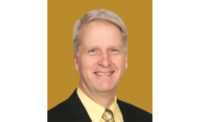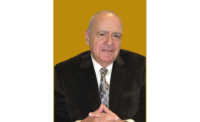The COVID-19 pandemic presents numerous unprecedented challenges to the monitoring industry and those with a stake in the protection services it provides. Not the least of these is operating in a regulated environment, under standards that did not fully anticipate the impact of public health mitigations. Underwriters Laboratories and its service delivery unit, UL LLC, are (in a position to/humbled by the opportunity to?) support all stakeholders on issues related to standards and compliance certification as we navigate this “new normal.”.
When COVID-19 first began to spread in North America, social distancing mitigations presented an immediate conflict with UL requirements. Monitoring station operation room designs that complied with UL/ULC technical requirements were not large enough to allow alarm response agents to social distance. As a result, Aagents had to be redeployed elsewhere, and their own homes was an immediate opportunity.
While today’s technology makes remote location monitoring possible, implementing that would put a monitoring station out of compliance with UL/ULC standards. Given the importance of compliance with national standards in the North American safety scheme, timely resolution of this conflict was critical.
As in the past, after natural disasters involving hurricanes, floods and superstorms, UL’s primary concern was for the health and safety of monitoring station staff and their customers. In early March, UL issued a statement which included a and set of temporary operating guidelines that outlined UL’s expectations of certified stations, using home-based agents, during what was then considered to be a short-term duration disruption.
In April, Underwriters LaboratoriesUnderwriters Laboratories initiated a collaborative standards development project that brought together a group of alarm service providers and industry stakeholders to draft revision proposals to UL and ULC Standards. The Task Group’s charter was to consolidate emerging industry best practices for operating during pandemic-type emergency conditions for inclusion in UL and ULC standards covering monitoring station operation. The proposals worked their way through the American National Standards Institute (ANSI) and the Standards Council of Canada processes and were formally adapted adopted in October.
The pandemic also challenges the methods that UL uses to confirm that monitoring stations are in continuous compliance with UL standards. Historically, UL staff visited would visit certified stations in-person annually on an annual basis to audit physical facilities, service delivery methods/records, and personnel qualifications, training and performance. Under pandemic conditions, however, the travelthe level of travel required by this model increased risk to UL staff members and custoemerscustomers. At the same time, monitoring stations began limiting access to their facilities to protect the health of monitoring agents still working on premise.
In July, UL worked with industry volunteers to pilot a virtual audit approach. Pilot results were incorporated into a formalized virtual audit program that rolled out in September. Initial feedback from participants suggests both benefits and drawbacks to virtual techniques. However, a. All agree that a safety-first approach duringin these uncertain times is a high priority.
As with so much in society, standards and certification schemes will continue to evolve as the science around COVID-19 grows.expands. Thehe lessons learned throughoutduring 2020 will most certainly influence the indurty’sindustry’s future direction.






